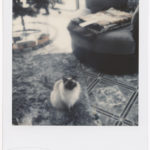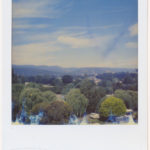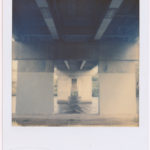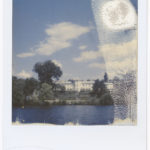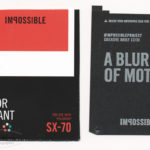Polaroid has certainly changed.
Well, the film has. The cameras have pretty much remained, historical relics that refuse to die. Sure, there are some new film models, but people don’t seem to recognise them as “Polaroid” cameras.
There is the brand “Polaroid”, that now seems a grab bag of products; digital cameras, sports cameras, video cameras, printers …
And there is the experience “Polaroid”, which involves shooting physical, hard copy photos delivered straight from the camera to your hand. But this isn’t the instant gratification of digital. It takes time. There is the anticipation and anxiety of waiting to see if the photo would turn out. The slow revealing of the image as it emerges from the grey background….
I’ve always liked Polaroid as an example of a well crafted hack. How could the mechanics of a photo lab be brought out into the real world and still work?
My attention was really drawn to the SX-70. The way it spat the photo out; the way it folded flat; and the fact that this was an SLR in a form not seen before. But, alas, I was a poor student then, and could not afford the camera, let alone the running costs.
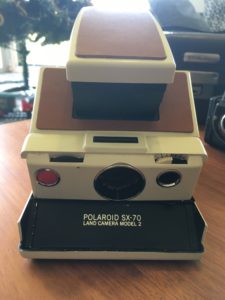
And so my wife got me one this Christmas. An old, much-loved SX-70. Second-hand refurbished, of course, since there hasn’t been a new one made since the early 1980s. It’s a beautiful piece of design.
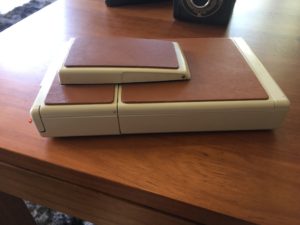
The first time I opened the camera was a bit nerve-wracking; I was frightened I’d pull the eyepiece off! But it didn’t happen.
The camera itself is fairly simple; it has a 110mm, f8 lens, with an auto-exposure shutter speed of 1/175 sec. to more than 10 sec. This makes it essentially an aperture priority exposure system, with a fixed aperture. There is a “lighten/darken” dial to give you some exposure compensation, but there is no display so you don’t know exactly what the shutter speed will be. I guess you get good at estimating it with experience. And there is a focus wheel that allows you to focus from about 25cm to infinity. Most of the time I think it will be living at “infinity”. There are distance measurements on the lens, not that you would use them.
Despite the look of it, it is a true SLR, with a fairly elaborate light path.
Alas, Polaroid no longer makes any film for these cameras, though I am told that you can, from time to time, come across old Polaroid film that has been stuck in the supply chain for decades. I’m not sure it would still be any good. However, some people bought some production equipment from the Polaroid company when it closed and started The Impossible Project (what a great name). 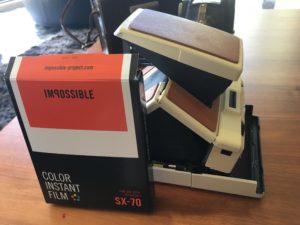 They make new film, with a different formula than Polaroid’s for the development chemicals contained within each picture.
They make new film, with a different formula than Polaroid’s for the development chemicals contained within each picture.
So, I’ve shot of a cartridge of film, which holds 8 shots; down from the original 10. Each time you press the shutter (the epitome of “Big Red Button”), there is a loud “thunk” and a whirr, and the photo is spat out the front. You have no chance of getting a discrete, candid shot with this!
Now the anxiety starts. The film packaging warns you to keep the photo away from light while it is developing, to keep it warm while it is developing (but not too warm), not to touch the front of the photo while it is developing. You need to treat them with care.
And finally, this instant colour film takes 45 minutes to fully develop. Black & White takes about 5 minutes, I’m told, but I haven’t shot any yet. Instant film? Maybe not. If that’s what you’re looking for, today’s Polaroid film is not for you. There are other more soulless modern processes available.
Below you can see my first 8 pictures. They are not fabulous, and I think it will take a bit of learning to get used to the camera and film. The film seems fairly slow, so it needs a bit of light to work well. Inside, without a flash? Nope. Outside? Yes.
The other thing to note is that the Impossible Project is still working on its chemistry and production process, and acknowledge that you may have issues. Some of the shots have development problems, with one having a large white defect. It might be me being careless in handling the shot, but I’m not sure.
So, my observations:
- I love the camera as a piece of design.
- Every film cartridge has a new, fresh battery for the camera in it!
- I’ll treat it as something experimental. Some people would call it “arty”. I’m happy with that label.
- I won’t expect to get technically fantastic images from it, but I think I can get interesting ones.
- Did I mention I love the camera?


